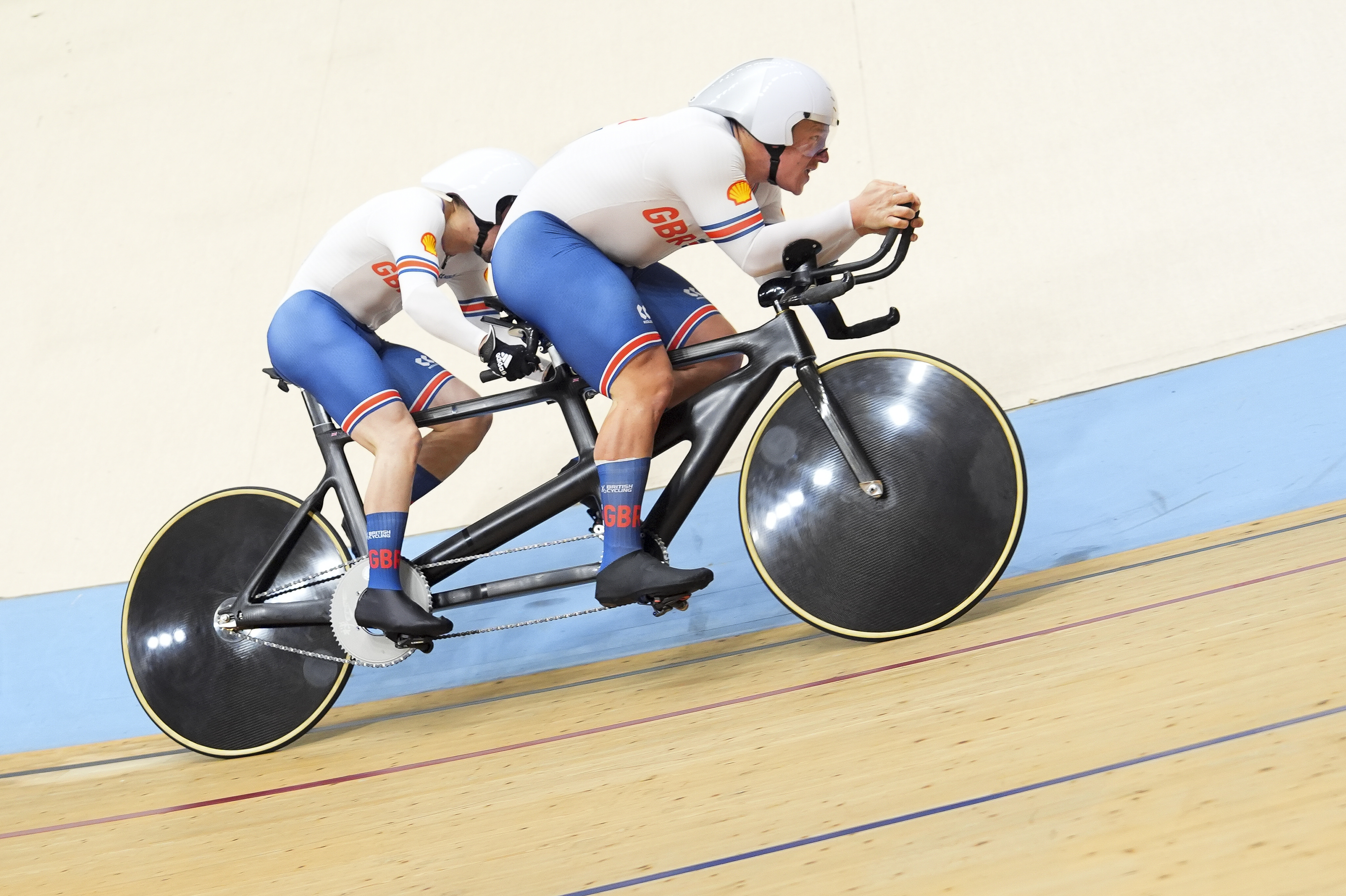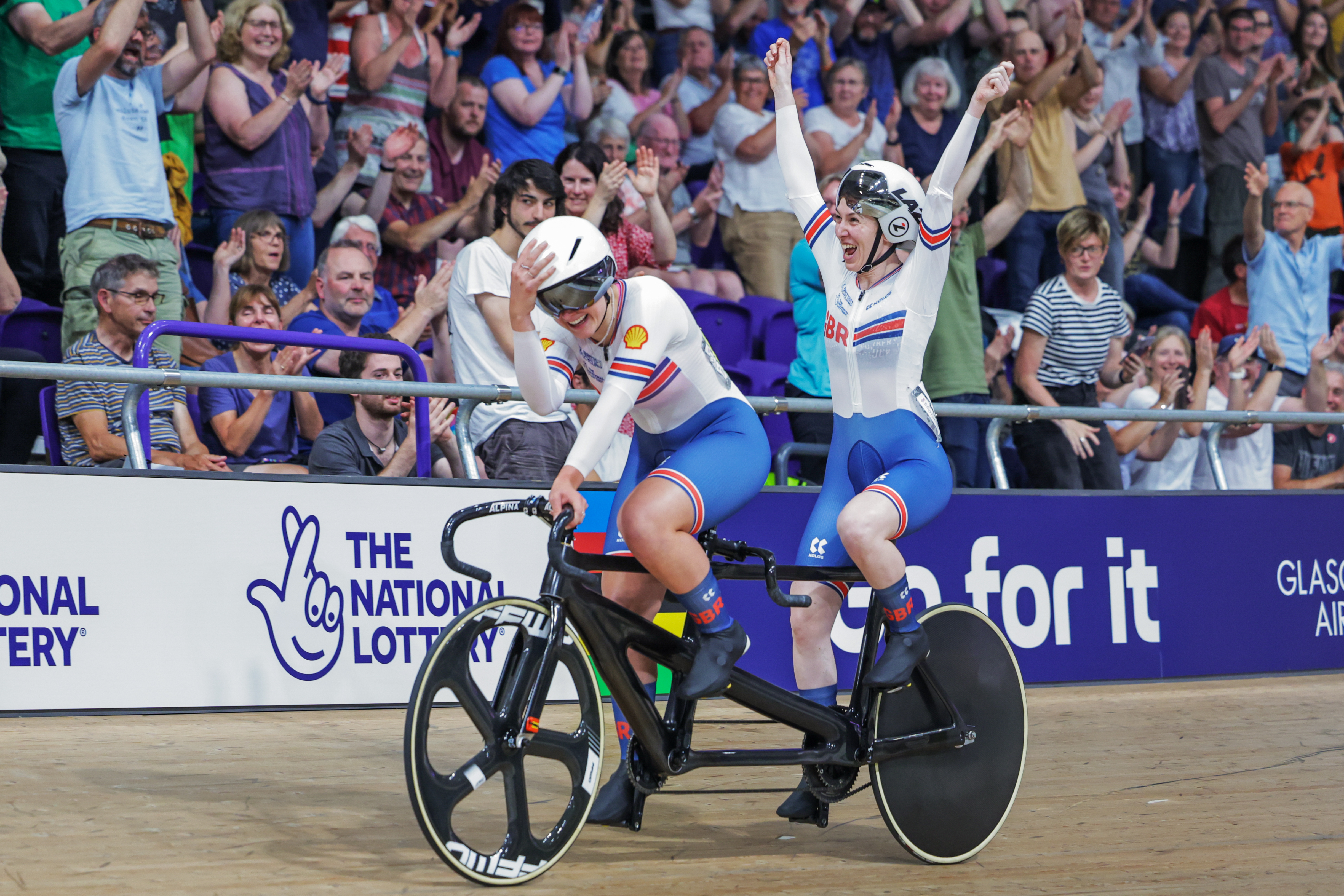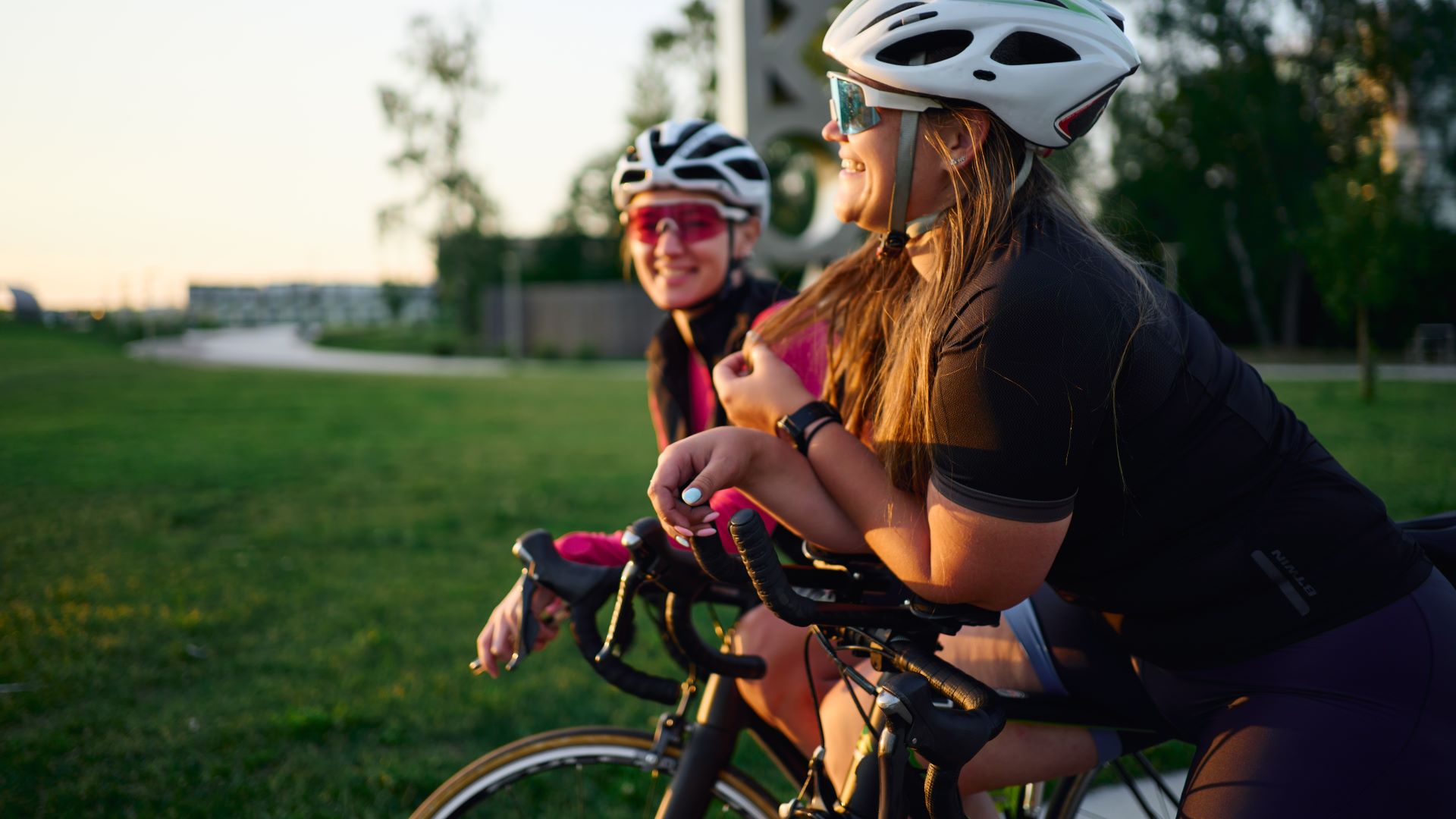The power of trust: Tandem racing secrets from GB's stars
GB's tandem racing champions tell Tom Davidson what it takes to develop enough faith in each other for a gold-medal ride


This feature originally appeared in Cycling Weekly magazine on 5 September. Subscribe now and never miss an issue.
“You could put the best two cyclists in the world on a tandem and they’re probably not going to go that quick,” says Neil Fachie. It’s a curious hypothesis, but if anyone knows what it takes to ride fast, Fachie does. He’s a 20-time tandem world champion and double Paralympic gold medallist, lauded as one of the best stokers – the person on the back of the bike – in the sport. As he stands in front of Cycling Weekly’s dictaphone, moments after becoming the kilometre time trial national champion, the 40-year-old has the Paralympics on his mind. This year’s Games in Paris are his fourth as a tandem cyclist, and last weekend saw Fachie earn his third silver medal in the kilo alongside his pilot, Matt Rotherham.
Tandem racing has now been at the Games for over 30 years, but dates back more than a century. Today, competing pairs, like Fachie and Rotherham, are capable of laying down up to 4,000 watts off the line – around two-and-a-half Mark Cavendishes worth of power – the highest figure of any cycling discipline. Watts alone, however, do not win races. Tandem racing is an art form, a dance that relies on flow, harmony and trust to go as fast as possible. For Fachie, the kilo Paralympic champion in Tokyo, it’s all about synchronicity. “Whoever I ride with on a tandem, I slightly adapt my riding style to them, they adapt to me, and you find that common ground where you’re both working in synchronicity to make the bike as fast as it can be,” he says. “I have to react instantly to what Matt does, because he’s the one that sees what’s going on.”
According to his pilot, Fachie has mastered the art. “When I ride with Neil,” Rotherham says, “it’s like I’m riding a solo bike. He’s so smooth I don’t notice him. I notice his power, the power that goes through the pedals, but in terms of how the bike moves and how it goes around the corner, it feels just like my normal bike.”
When he was four years old, Fachie was diagnosed with retinitis pigmentosa, a genetic eye condition that gradually kills off the light-sensitive cells of the retina and for which there is currently no treatment or cure. “At some point, I’ll lose all my sight,” he says bluntly in his thick Aberdeen brogue. The sight lost so far means he has limited peripheral vision, struggles to recognise faces and uses a magnifying glass to read text. “Under exertion, my sight sort of disappears,” he says. “During the kilo, by the end, I can’t see anything at all, but some fully sighted people say the same. There’s no way I could get around the track on my own. I certainly wouldn’t be riding my bike on the road.”
When the lighting’s good, Fachie says that generally he can “get around without walking into stuff”. At other times, particularly after an effort, he needs assistance. This is why the relationship between pilot and stoker is so important; the steering often continues off the bike. Fachie’s wife Lora, who is also blind, relies on her pilot, Corrine Hall, to marshal her through the media zone after a race. Off the track, her black labrador guide dog helps her around the velodrome.

Tandems were introduced to the Olympics in 1908, removed after 1972, and reintroduced in 1992
Although it’s not always the case, most tandem pilots in the British set-up follow a similar path. They come through the academy as individual athletes, get dropped, and then receive a lifeline on the para- squad. For Helen Scott, a Paralympic champion pilot in Rio 2016, it took “a gentle nudge” from her parents to move across to tandem racing. But once she got on the bike, she “knew it was something I was born to do”.
Get The Leadout Newsletter
The latest race content, interviews, features, reviews and expert buying guides, direct to your inbox!
Until March this year, Scott worked as GB’s Paralympic foundation coach, tasked with teaching the key principles of tandem racing to her riders. “Trust is a big one,” she says. “Communication. We’re put on tandems together, paired up based on our physical abilities. That doesn’t necessarily mean that we’re going to be best friends. We’re completely different people, different backgrounds, different ages. But it works if you have clear communication and respect for each other.”
One of GB’s star pairings is Sophie Unwin and Jenny Holl. They’re easy to spot at an event. Typically, they turn up together, sit shoulder-to-shoulder, and while away the time laughing.
“When I first jumped on with Sophie, we were both pretty much brand new, and we were horrible,” says Holl, the pair’s pilot. “We couldn’t ride out of the saddle at all. We weren’t in sync. Neither of us knew what to do. I think it would have been a very entertaining watch, let’s put it that way.”
Now, the duo are five-time world champions and Paralympic silver medallists, runners-up in the road race in Tokyo. The winning formula for them has been “trust on both sides”, explains 30-year-old Unwin. “A lot of people think the stoker has to trust the pilot, because they’re in control,” she says, “but the pilot also has to trust that the stoker isn’t going to do something stupid.” Unwin remembers rising out of the saddle when Holl wasn’t expecting it: “She shouted at me! I’d never dare do that again.”

Unwin and Holl’s bond on the bike is strengthened by mutual understanding off it. The former has Stargardt disease, a genetic condition similar to Fachie’s but which affects central vision first, exacerbated by vitamin A. “You know the old rule that eating carrots will help your sight?” says Holl. “It’s the opposite for Sophie. Carrots will make her eyesight worse.” Recognising her partner’s condition, Holl says, “makes me aware of how she sees, and helps me know things that she’s missing”.
You’d imagine that not being able to see what’s going on would be terrifying – but apparently not. “It comes from not being able to see what’s happening,” Unwin laughs. “I don’t think I’ve ever been scared on the back of a tandem.” Fachie, the 20- time world champion stoker, shares the same view. “It’s quite a unique thing to get on the back of a bike and not have any idea what you’re heading towards,” he says. “I wouldn’t jump on a bike with just anyone. Probably when I started out I would have, I didn’t know better, but now I kind of value my life.”
Last weekend, Unwin and Holl charged to their first Paralympic title. Their preparation, synchronicity, and trust led them to a world record in the 3,000m individual pursuit qualifying, clocking 3:17.643, before they overhauled the final in the last kilometre to win by over two seconds. “This was the event we wanted,” said Unwin. “It’s just incredible.” The duo’s success was one of three tandem golds on the track for GB, who claimed seven medals in the discipline. It was, in British Cycling's words, “tandemonium” in Paris. The Brits know what it takes to go fast.

Thank you for reading 20 articles this month* Join now for unlimited access
Enjoy your first month for just £1 / $1 / €1
*Read 5 free articles per month without a subscription

Join now for unlimited access
Try first month for just £1 / $1 / €1

Tom joined Cycling Weekly as a news and features writer in the summer of 2022, having previously contributed as a freelancer. He is fluent in French and Spanish, and holds a master's degree in International Journalism. Since 2020, he has been the host of The TT Podcast, offering race analysis and rider interviews.
An enthusiastic cyclist himself, Tom likes it most when the road goes uphill, and actively seeks out double-figure gradients on his rides. His best result is 28th in a hill-climb competition, albeit out of 40 entrants.
-
 Trek, State and Specialized raise bike prices while other brands limit US releases — Is this just the beginning?
Trek, State and Specialized raise bike prices while other brands limit US releases — Is this just the beginning?As tariffs hit, the bike industry is forced to adapt, whether through price increases, limited releases, or a restructuring of supply chains
By Anne-Marije Rook
-
 How I got my non-cyclist friend hooked on riding bikes — and how you can, too
How I got my non-cyclist friend hooked on riding bikes — and how you can, tooWith a little bit of gentle guidance, “bikes aren’t my thing” can turn into “when’s our next ride?”
By Marley Blonsky